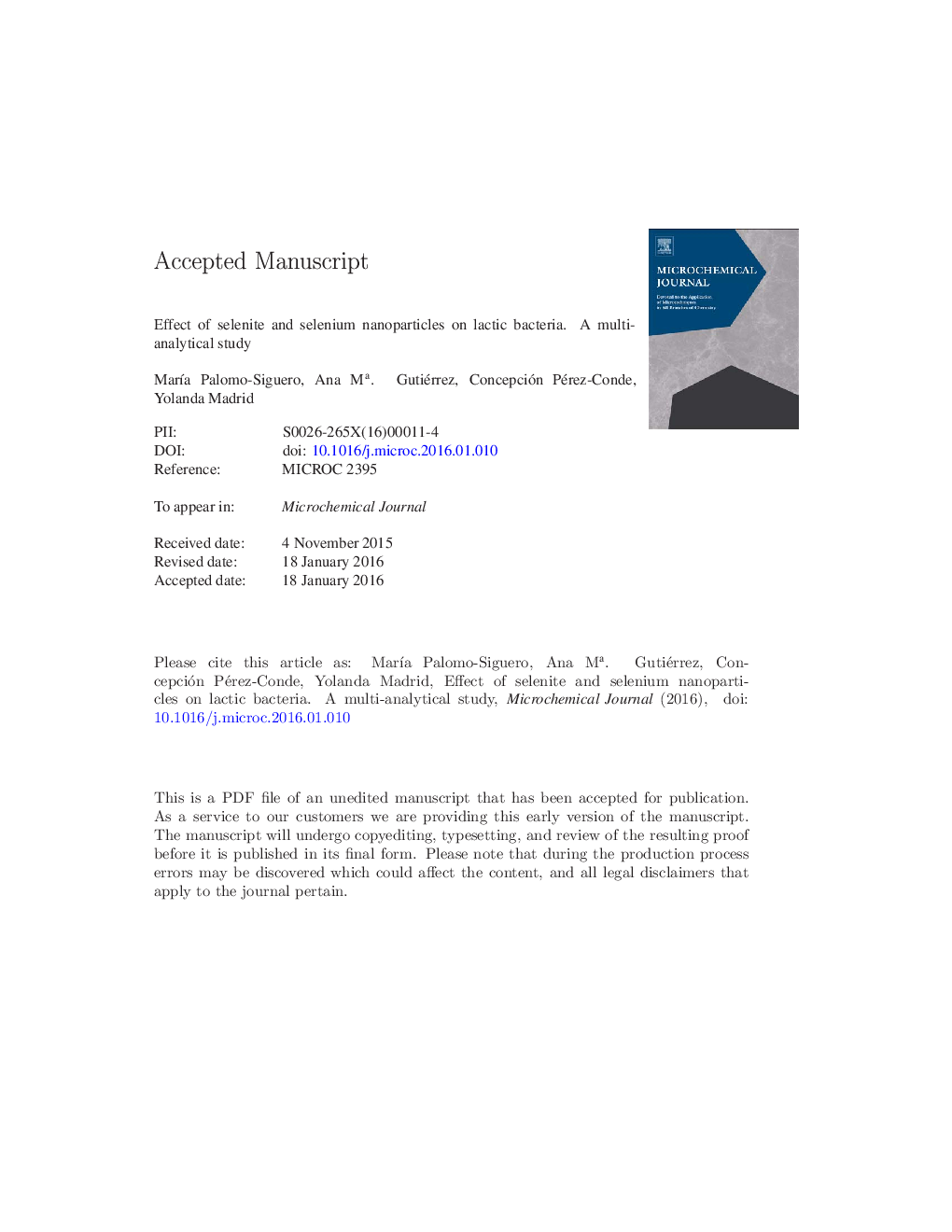| Article ID | Journal | Published Year | Pages | File Type |
|---|---|---|---|---|
| 7641827 | Microchemical Journal | 2016 | 36 Pages |
Abstract
The effect of selenite and chitosan-modified SeNPs (CS-SeNPs) on Lactobacillus bulgaricus was evaluated through a multianalytical approach based on flow cytometry and transmission electron microscopy (TEM), and high performance liquid chromatography (HPLC) on line coupled to inductively coupled plasma mass spectrometry (ICP-MS) to investigate both lactic bacteria viability in presence of selenium compounds and transformation of selenium compounds once accumulated by the bacteria. For this purpose, L. bulgaricus were grown at 37 °C for 24, 48 and 72 h in presence of 1 and 10 μg Se·mLâ 1 of selenium as CS-SeNPs and Na2SeO3. No significant differences in bacteria cell viability between selenium-enriched and control bacteria were observed when adding 1 μg Se·mLâ 1 either as Se(IV) or CS-SeNPs. In contrast, bacteria viability decreases when increasing selenium concentration up to 10 μg Se·mLâ 1 being this effect more accused when selenium was supplemented as selenite. Under these conditions SeNPs killed approximately 20% of Lactobacillus after 24 h of exposure while the percentage increased up to 60% of bacteria when 10 μg Se·mLâ 1 as selenite was applied. Transmission electron microscopy (TEM) images show that CS-SeNPs readily enter in the bacteria cells preserving membrane integrity and therefore causing no cellular damage. Results from HPLC-ICPMS indicate that most of the CS-SeNPs in the culture media were transformed by the bacteria to organo selenocompounds. A low transformation into organic forms was observed when L. bulgaricus were exposed to selenite, with Se(IV) being the major Se-specie identified. The fact that Lactobacillus was more efficient in transforming SeNPs than selenite could also explain the differences observed in viability.
Keywords
Related Topics
Physical Sciences and Engineering
Chemistry
Analytical Chemistry
Authors
MarÃa Palomo-Siguero, Ana Mªa. Gutiérrez, Concepción Pérez-Conde, Yolanda Madrid,
